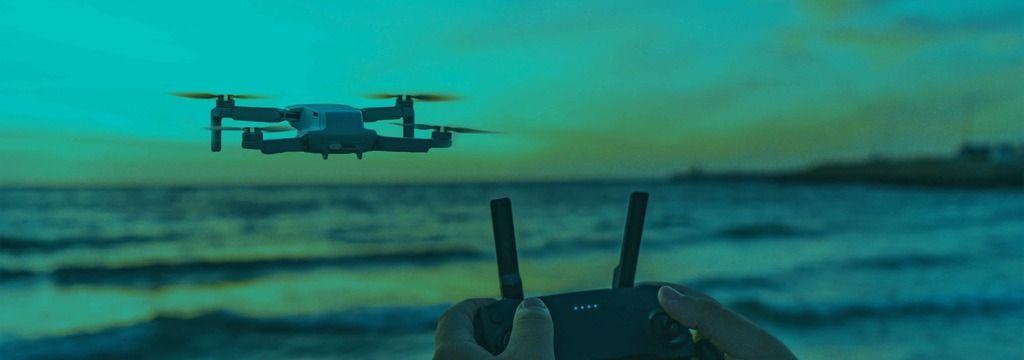For the proper management of fisheries, it is extremely important to have the appropriate tools to be able to collect the necessary information. Technological advances represent powerful tools that we are continuously improving and that increase our capacity to research, implement and monitor the sustainable use of our natural resources. Next, we explore the synergy that exists between technological development and public fisheries policy, using contemporary examples occurring in Mexico.
Some of the technologies that have been developed and are being implemented in the fishing sector have to do with monitoring, traceability and communication. The certification of fishery products as sustainable is increasingly easy as digital applications allow us to track the fish product along the entire supply chain, with a record that verifies its origin until it reaches the final consumer. One of the largest sustainability certifications in the world is the Marine Stewardship Council (MSC), an organization that uses a combination of technology and inspections to certify and track fish products along the entire chain of custody.1 Another example is NADIR, a Mexican company that monitors fishing activities to meet national and international sustainability requirements 2.
In terms of communication, there are already some applications that facilitate interaction between producers and consumers, allowing fishermen to sell their product even before arriving at port. Abalobi is an application that started in South Africa and allows anglers to create a profile with their catches, so that their catch and origin is immediately visible to the consumer3.
Monitoring is a very important issue in fishing; the less expensive and easier it can be carried out, the fewer the cases of illegal fishing. Technology now allows us to monitor fishing activity in all of the world's oceans using satellite images and signals. The Global Fishing Watch portal is a clear example of the monitoring that can be given to fishing vessels completely remotely4. These are examples of how technological advances continue to change the way we fish, making operations not only more productive, but also more sustainable.
In the case of Mexico, we can see how public policy can promote the development and use of different technologies with an impact on fisheries management. Since the entry into force of the General Law on Sustainable Fisheries and Aquaculture published in the Official Gazette in 2007, it became mandatory that fishing vessels with engines greater than 80 horsepower and a length greater than 10.5 meters7 will install a “Satellite Location and Tracking System for Fishing Vessels” (SISMEP) 5. This is a satellite monitoring system that allows us to know the location of more than 2 thousand fishing vessels in Mexico6. This information is very useful for improving technical and scientific fisheries research information, verifying compliance with restrictions and restricted catch areas and providing information on the location of a vessel in case of emergency.
One of the biggest technological challenges, with important implications for fisheries management in Mexico and in many countries, is the monitoring and regulation of small-scale or coastal fishing. Approximately 97% of the boats registered in Mexico are pangas with a length of less than 10 meters. Taken together, artisanal fishing can have an impact on fish resources similar to the industrial sector. However, tools such as SISMEP, which is used to monitor industrial vessels in Mexico, have not yet been implemented for the artisanal sector, due to the costs and organizational needs involved in installing these monitoring devices on more than 74,000 vessels around the country.
Currently, civil organizations Causa Natura (CN) and Global Fishing Watch (GFW) are working to use data science to improve inspection and surveillance efforts in fishing activity. Both organizations work to promote the best use of access to information to solve fishing problems using new remote monitoring technologies and data science. Causa Natura is a civil organization based in Mexico that, through research and the use of information technologies, promotes public policies in the management of natural resources that are transparent, participatory and that allow for accountability. GFW is an international civil organization that is committed to the sustainable use of our oceans through tools and analysis that provide transparency to fishing activity around the world.
GFW has SISMEP databases of the movements of industrial vessels from 2013 to 2019 on its platform, obtained through a request for access to information from Oceana Mexico to Mexican fishing authorities8. However, as mentioned above, these data mainly cover industrial vessels and not coastal vessels smaller than 10 meters in length. This is why Causa Natura and Global Fishing Watch, together with Pronatura Noroeste, which works with the fishing sector and conservation areas in northwestern Mexico, are developing a predictor of illegal fishing specifically for coastal boats, using Loreto Park as a pilot site. This will serve to identify the places and times with the greatest risk or susceptibility to this illegal activity and to establish better inspection and surveillance strategies to prevent it.
We live on an interconnected planet with interdependent and dynamic fishery resources; requiring collaborative efforts for the sustainable management of our marine resources. There are more and more technological tools that have changed the way in which people fish around the world, creating opportunities to take advantage of and encourage the use of these tools, directing their development towards sustainable use.
References:
1 Marine Stewardship Council. https://www.msc.org/es
2 NADIR. http://www.nadir.com.mx/
3 BALOBS. http://abalobi.info/about/
4 Global Fishing Watch. https://globalfishingwatch.org/map/
5 YEARS AGO. https://www.monitoreodeembarcaciones.com.mx/monitoreosatelital/QuienDebe.htm
6 Terrazas, R. When We Return to the Sea, Political Animal, 2020
7 CONAPESCA, Aquaculture and Fisheries Statistical Yearbook 2018
8 Oceana Mexico. https://auditoriapesquera.org/sismep



Comentarios (0)